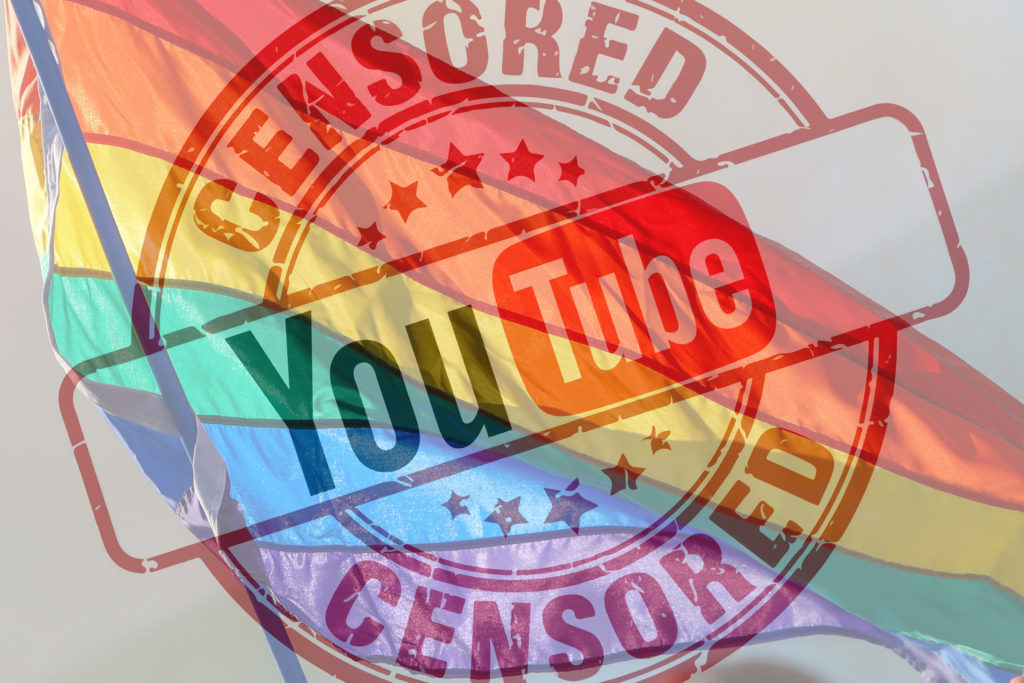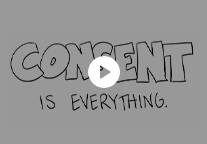YouTube is a platform that connects millions of users through videos, but with this vast audience comes great responsibility. To ensure a safe environment, YouTube has established specific content policies that govern what can and cannot be shared. These policies aim to protect users from harmful content, including sexual assault material. Let's dive into what these policies entail and why they are crucial for the community.
The Importance of Content Moderation on YouTube

When it comes to YouTube, content moderation plays a pivotal role in maintaining the integrity of the platform. Here’s why it's essential:
- Protecting Victims: It’s crucial to safeguard victims of sexual assault from triggering or harmful content. YouTube’s policies help ensure that these individuals are not subjected to further trauma.
- Creating a Safe Community: Moderation fosters a space where users can freely express themselves without fear of encountering distressing content. This is particularly important for younger audiences.
- Legal Compliance: By enforcing strict policies, YouTube complies with various laws regarding the protection of users, which helps avoid potential legal issues and liabilities.
But how does YouTube enforce these policies? This is where automated systems and human moderators come into play. YouTube employs advanced algorithms that can detect inappropriate content and flag it for review. However, human oversight is equally important for nuanced cases, especially in complex situations surrounding sexual assault. This dual approach aims to balance efficiency with sensitivity.
Furthermore, it’s worth noting that content moderation isn’t perfect. With millions of videos uploaded daily, some inappropriate content may slip through the cracks. That’s why community reports are vital. Users can flag content they find troubling, prompting YouTube to review and take necessary action.
Ultimately, effective content moderation not only protects users but also enhances the overall quality of content on the platform. As creators and viewers, we all have a part to play in ensuring that YouTube remains a safe space for everyone.
Also Read This: How to Hide Likes on YouTube for a More Private Viewing Experience
3. What Constitutes Sexual Assault Content?

Understanding what qualifies as sexual assault content on YouTube is crucial for both creators and viewers. YouTube has strict policies to ensure its platform remains a safe space for everyone, and it defines sexual assault content in a very specific manner. But what does that really mean?
Sexual assault content typically includes any videos that depict, promote, or glorify sexual violence or coercion. This can range from graphic representations to discussions that trivialize the severity of such acts. Here are some key examples:
- Graphic depictions: Videos that show actual incidents of sexual assault, either through re-enactments or actual footage, are strictly prohibited.
- Inappropriate commentary: Content that makes light of sexual assault or encourages harmful behaviors falls under this category.
- Promotion of sexual violence: Any content that suggests or endorses sexual violence as acceptable behavior is considered a violation.
- Misleading claims: Videos that falsely accuse someone of sexual assault without evidence can also be flagged, as they may cause real harm to individuals and communities.
It's essential to note that YouTube's guidelines not only focus on the act itself but also the context in which it is discussed. For instance, educational content about sexual assault, such as awareness campaigns or survivor stories, can be acceptable. However, if such content is presented in a sensationalized or exploitative way, it risks being removed.
Creators must be aware of these definitions as they produce content. Misunderstanding these guidelines can lead to videos being taken down or channels facing severe penalties. To avoid this, always strive to approach sensitive topics with care and respect. When in doubt, consult YouTube’s Community Guidelines or reach out to their support for clarification.
Also Read This: How Big Should YouTube Banners Be? A Complete Guide to Banner Dimensions
4. Reasons Behind YouTube's Restrictions

YouTube's restrictions on sexual assault content stem from a deep commitment to maintaining a safe and respectful environment for its users. Here are some of the primary reasons driving these policies:
- Protecting vulnerable communities: Sexual assault affects many individuals, and for survivors, encountering such content can be deeply triggering. YouTube aims to create a platform where users, especially those who have experienced trauma, can feel safe.
- Encouraging respectful discourse: By restricting harmful content, YouTube fosters a community where discussions can be constructive rather than sensational. This encourages users to engage thoughtfully with serious issues.
- Legal implications: Failure to regulate content related to sexual violence could expose YouTube to legal liabilities. By proactively enforcing guidelines, the platform aims to mitigate potential risks and protect its brand integrity.
- Community standards: YouTube is dedicated to adhering to community standards that reflect societal values. As a result, content that is deemed unacceptable by broader social norms is actively monitored and restricted.
Ultimately, these restrictions are not just about rules; they reflect YouTube's commitment to ethical content moderation. By establishing clear guidelines on sexual assault content, YouTube sends a strong message that such behavior will not be tolerated, reinforcing the idea that all users deserve respect and safety.
As creators and viewers, we all share the responsibility of fostering a safe online community. Understanding and adhering to these restrictions is a crucial step in that direction.
Also Read This: How to Share a YouTube Video to Your Instagram Story
5. Impact of These Policies on Creators and Viewers
Understanding YouTube's restrictions on sexual assault content reveals a complex landscape that affects not just the platform but also its creators and viewers. For creators, these policies can feel like a double-edged sword. On one hand, they foster a safer environment by discouraging harmful content. On the other hand, they can lead to frustration and confusion about what is considered acceptable.
For Creators:
- Censorship Concerns: Many creators feel that strict guidelines can stifle important conversations. For example, when a creator wants to discuss sexual violence as part of a larger social commentary, they may worry that their content will be flagged or removed, limiting their ability to educate and inform.
- Monetization Issues: Creators often rely on ad revenue, but content that touches on sensitive subjects may be demonetized. This can push creators to self-censor or avoid critical topics altogether, ultimately impacting the depth and variety of content available to viewers.
- Loss of Audience: Some creators have reported losing subscribers after their videos are labeled inappropriate, leading to a significant decline in viewer engagement. This can be particularly disheartening for those working to raise awareness about important issues.
For Viewers:
- Lack of Resources: While YouTube aims to protect viewers from harmful content, this sometimes leads to a lack of available resources for survivors or those wanting to learn about sexual assault. Viewers may find it difficult to access informative content that could help them understand these issues better.
- Misleading Content: In some cases, viewers may encounter content that skirts the edge of these guidelines, leading to misinformation or trivialization of serious topics. This can be particularly harmful as it desensitizes audiences to real issues.
- Community Impact: Affected viewers may feel alienated or unsupported if the platform does not provide a safe space for open discussions. This can create an environment where victims feel less empowered to speak out or seek help.
In summary, while YouTube's policies aim to create a safer platform, they can significantly impact both creators and viewers, leading to a complex relationship with content creation and consumption. The challenge lies in balancing safety with open dialogue.
6. Challenges in Enforcing Content Policies
Enforcing content policies on platforms like YouTube is no small task. With millions of videos uploaded daily, the sheer volume of content makes it challenging to monitor and enforce rules effectively. Here are some of the key challenges YouTube faces in this regard:
1. Scale and Volume: YouTube hosts over 500 hours of video uploaded every minute. This staggering amount means that while algorithms can help flag potential violations, human review is often needed to make nuanced decisions. The limited number of content moderators can't keep up, leading to inconsistent enforcement of policies.
2. Ambiguity of Guidelines: The policies regarding what constitutes sexual assault content can sometimes be vague. Creators may inadvertently cross lines due to unclear definitions. For example, is a video discussing sexual assault in an educational context acceptable, or does it get flagged? This ambiguity leads to confusion and frustration among creators trying to comply.
3. Algorithm Limitations: While YouTube employs advanced algorithms to detect inappropriate content, these systems are not foolproof. They can struggle with context, missing videos that are educational or informative about sexual assault while flagging benign content that mentions sensitive topics.
4. User Reporting System: YouTube relies on users to report content that they find inappropriate. However, this system can be flawed, as it may lead to a disproportionate number of reports against specific creators while others slip through the cracks. Additionally, a motivated user could abuse the reporting system to silence voices they disagree with.
5. Cultural Sensitivity: YouTube operates globally, and cultural perceptions of sexual assault and appropriate discourse can vary significantly. What may be deemed unacceptable in one region might be considered acceptable in another, complicating enforcement across diverse audiences.
In conclusion, while YouTube's restrictions aim to protect users, the challenges in enforcing these policies create a landscape where both creators and viewers must navigate a complex web of guidelines that can sometimes hinder meaningful discussion and education on such critical topics.
 admin
admin








